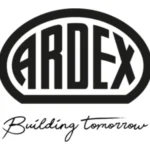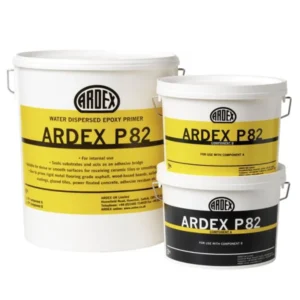£46.00 – £1,920.00Price range: £46.00 through £1,920.00
Rapid Drying Flexible Floor Levelling and Smoothing Compound for Timber Floors.
An advanced fibre-reinforced smoothing and levelling compound featuring Microtec technology, Levelling Compound for Timber Floors
Designed to smooth rapidly and level existing substrates prior to applying a floor finish, with FA 20
Ardex FA 20 applies easily to timber floors, flooring-grade asphalt, and substrates with adhesive residues. You can walk on it in about 2 hours at 20°C.
Ardex FA 20 is suitable for all common subfloors, such as concrete and cement/sand screeds. Additionally, it also uses flooring-grade asphalt, timber, and chipboard, as well as quarry tiles. Moreover, it can be applied over existing subfloors that have sound adhesive residues. Consequently, Ardex FA 20 effectively levels internal subfloors and provides a smooth surface.
Notably, the surface must be hard, sound, and free of dust, dirt, and other barrier materials such as paint, lime coatings, plaster, excessive adhesive residues, etc.
Use Ardex DGR degreaser to remove polish, wax, grease, oil, and similar contaminating substances., consequently, direct-to-earth subfloors must have an effective damp-proof membrane, such as Ardex DPM.
Not quite what you’re looking for? Follow this link here to browse more of our Ardex range.
Want to see more Ardex products? Follow this link to view a range of Ardex Projects.
Self-levelling compounds are a popular solution for achieving flat, even floors. Whether you’re renovating a room or starting a new construction project, these compounds can save you time and effort while ensuring a professional finish. In this article, we’ll explore what self-levelling compounds are, how they work, and the benefits they offer for homeowners and DIY enthusiasts alike.
Self-levelling compound simplifies floor preparation by creating a smooth, even surface for various flooring types. This versatile material ensures reliable results in both residential and commercial settings.
Using a self-levelling compound is straightforward:
1. Preparation: Ensure the subfloor is clean, dry, and free of any debris. Any cracks or holes should be repaired prior to application.
2. Mixing: Follow the manufacturer’s instructions to mix the compound with water. It’s essential to achieve the right consistency for optimal flow.
3. Application: Pour the mixed compound onto the floor. It will naturally flow into low areas, creating a smooth surface as it sets.
4. Finishing Touches: Once dried, the surface can be sanded if necessary, and then it’s ready for the final flooring.
Benefits of Using Self-Levelling Compounds
Self-levelling compounds offer several advantages:
• Time-Saving: They eliminate the need for extensive manual labour, allowing for quicker installation.
• Professional Finish: The smooth surface ensures that the final flooring looks great, without bumps or imperfections.
• Versatility: Suitable for various surfaces, including concrete, wood, and even existing flooring, self-levelling compounds can be used in multiple applications.
• Enhanced Durability: These compounds are designed to withstand wear and tear, making them an excellent choice for high-traffic areas.
Who Can Use Them?
Self-levelling compounds can benefit homeowners looking to improve their flooring or DIY enthusiasts eager to take on a new project. With a little preparation and the right tools, anyone can achieve a level floor without the need for professional assistance.
In summary, self-levelling compounds are not only an efficient and effective solution for creating smooth, even floors in any space,
but they also offer significant advantages. Furthermore, their ease of use and numerous benefits make them an ideal choice for both beginners and seasoned DIYers. If you’re considering a flooring project, think about incorporating self-levelling compounds to ensure a flawless finish. By doing so, you will enhance the overall quality of your flooring project.
| Levelling | Minimum Thickness: 3mm Maximum Thickness: 20 mm Compressive Strength @ 28 days: 30 N/mm2 Walkable: 2 Hours Finished Floor Covering After: 24 Hours Suitable for Substrates: Timber / Underfloor heating |
|---|---|
| Quantity | 20Kg Bag, 25 x 20Kg Bags, 50 x 20Kg Bags |


